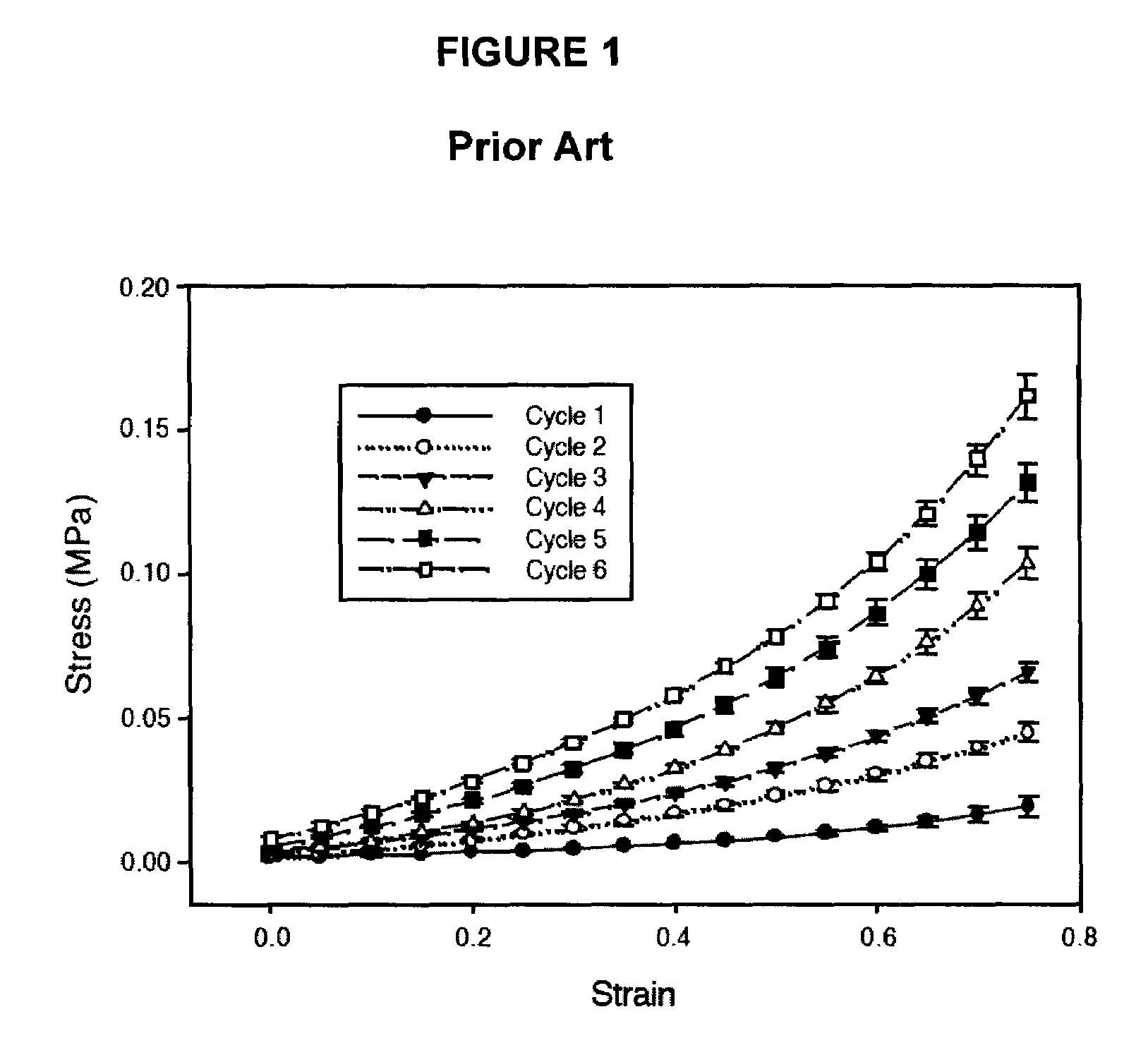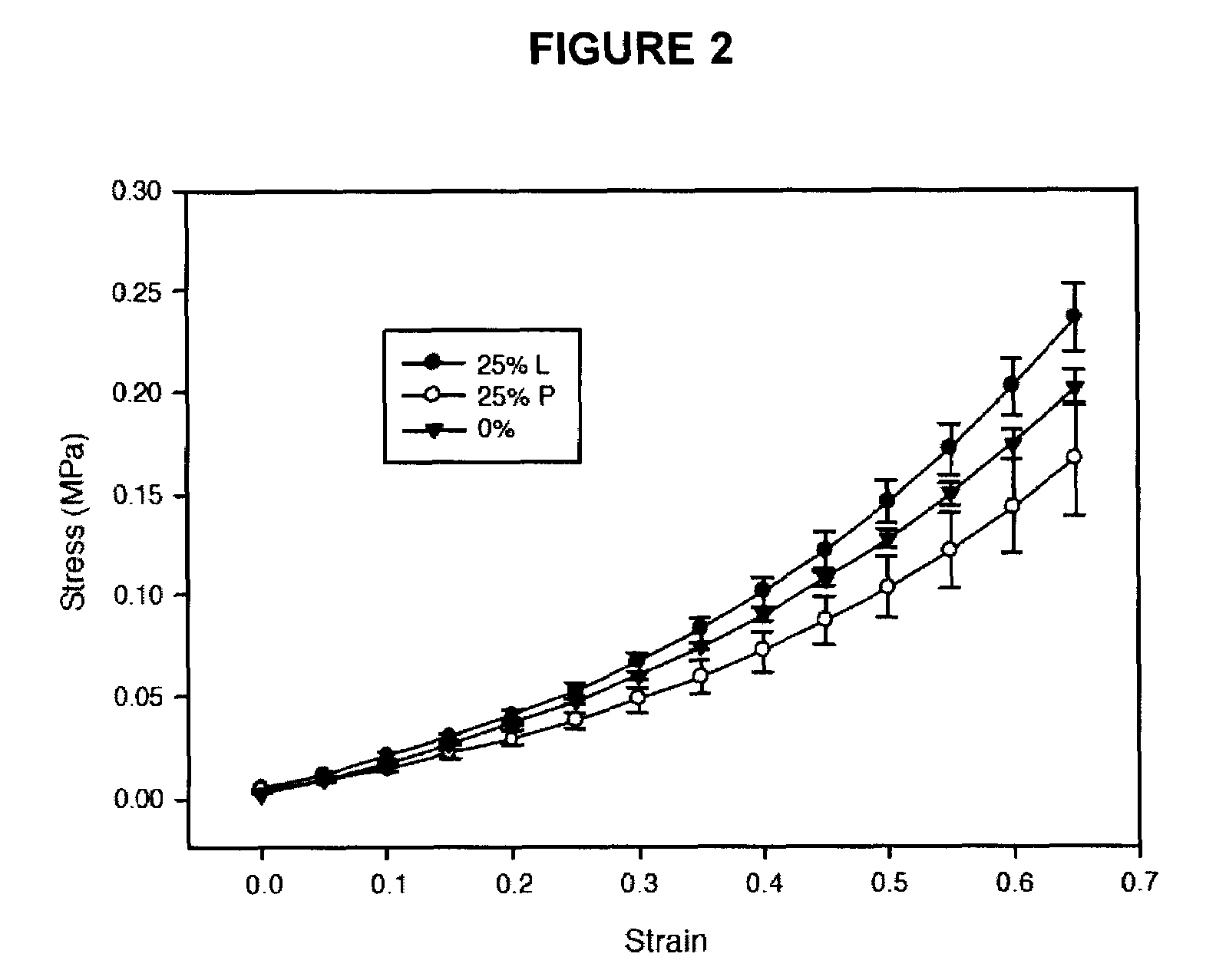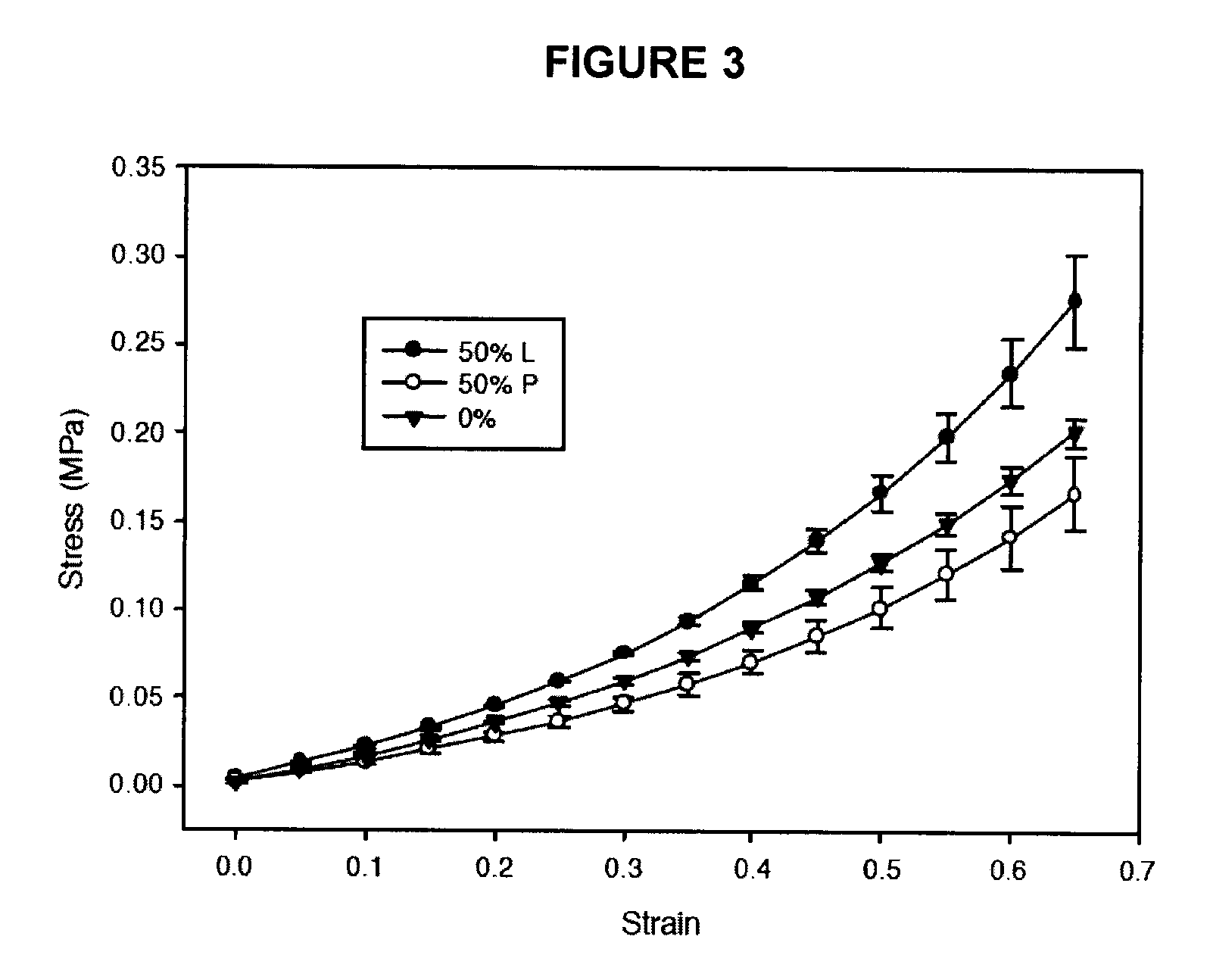Anisotropic hydrogels
a technology of anisotropic hydrogels and hydrogels, applied in the direction of pipes, powder delivery, prosthesis, etc., can solve the problems of chemical hydrogels that are not homogeneous, chain loops and free chain ends also produce network defects in both physical and physical, and do not contribute to the permanent network elasticity
- Summary
- Abstract
- Description
- Claims
- Application Information
AI Technical Summary
Benefits of technology
Problems solved by technology
Method used
Image
Examples
example 1
Method for Producing Anisotropic PVA
[0068]A PVA (suitably with a MW of 146,000 to 186,000, 99+% hydrolyzed) solution with the desired concentration in distilled water was prepared by heating while mixing for 3 hours at a temperature around 90° C. The solution was then poured into molds. The molds were then thermally cycled once (cycle 1) by freezing by cooling from about 20° C. to about −20° C. at a rate of about 0.1° C. / min, holding at −20° C. for one hour, and then thawing by heating back to 20° C. at a warming rate of about 0.1° / min. This process represents one cycle. The mold was opened and the PVA sheet was stretched to a desired strain in a range of between about 25 to about 100%. The stretched sample was then secured by a custom designed mold. A set of 5 custom design plates were built in order to study the effect of strain and of the number of thermal cycles up to 6 cycles.
example 2
The Effect of Strain on Anisotropic Mechanical Properties
[0069]To study the effect of strain on anisotropic mechanical properties, a 10% PVA solution concentration was used. In this study, five non-stretched samples were physically cross-linked through one freeze-thaw cycle as described in Example 1. One of the samples was left un-stretched and used as control. The remaining four samples were each stretched and secured in the sample molds at 25, 50, 75, and 100% strain. The molds were then closed and placed in a water bath, together with the control, and all samples were cycled up to cycle six, using the freeze-thaw cycling procedure described in Example 1. All the cycle six samples, including the control, were cut in either longitudinal or perpendicular direction to the applied stress. Five samples (n=5) were cut in each direction with dimensions of 25×5 mm2. The mechanical testing was performed using an INSTRON™ hydraulic mechanical system. All the samples were tested with a gauge...
example 3
The Effect of Number of Thermal Cycles on Anisotropic Mechanical Properties
[0070]Once again a 10% PVA solution was used in this study. Five samples were physically cross-linked through one freeze-thaw cycle as described in Example 1, at 0% strain. After the first cycle, five samples were then stretched and secured at a strain of 75%. A portion of each sample was retained and cycled through the thermal cycles at 0% strain and were used as controls. All samples were then cycled through cycles two to six. All the samples were cut in either longitudinal or perpendicular direction for tensile testing (n=5). FIGS. 7 to 11 show both the longitudinal and perpendicular strips stress-strain curves as well as the isotropic control data for cycles two to six. Results in FIG. 12 show that in the longitudinal direction, mechanical strength increases as the number of cycles increases. An orientation effect on mechanical strength and the effect of increasing number of thermal cycles can clearly be ...
PUM
| Property | Measurement | Unit |
|---|---|---|
| temperature | aaaaa | aaaaa |
| temperature | aaaaa | aaaaa |
| temperature | aaaaa | aaaaa |
Abstract
Description
Claims
Application Information
 Login to View More
Login to View More - R&D
- Intellectual Property
- Life Sciences
- Materials
- Tech Scout
- Unparalleled Data Quality
- Higher Quality Content
- 60% Fewer Hallucinations
Browse by: Latest US Patents, China's latest patents, Technical Efficacy Thesaurus, Application Domain, Technology Topic, Popular Technical Reports.
© 2025 PatSnap. All rights reserved.Legal|Privacy policy|Modern Slavery Act Transparency Statement|Sitemap|About US| Contact US: help@patsnap.com



